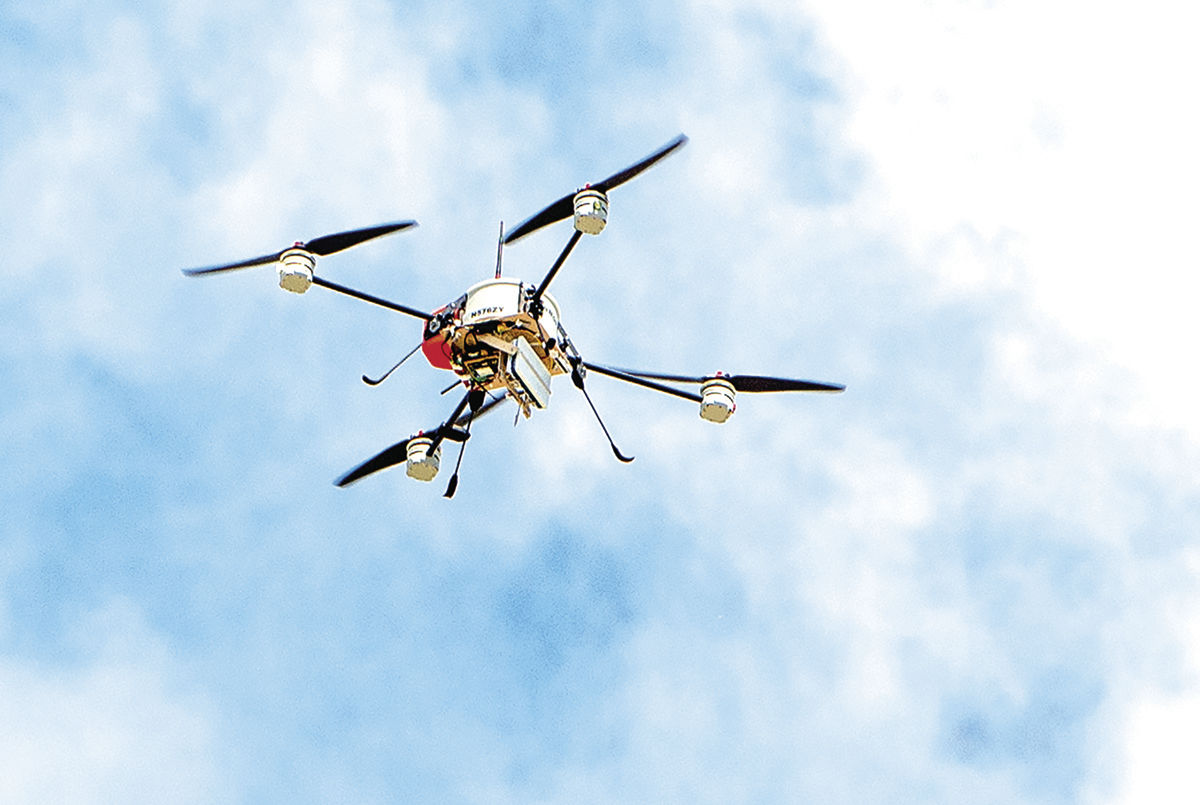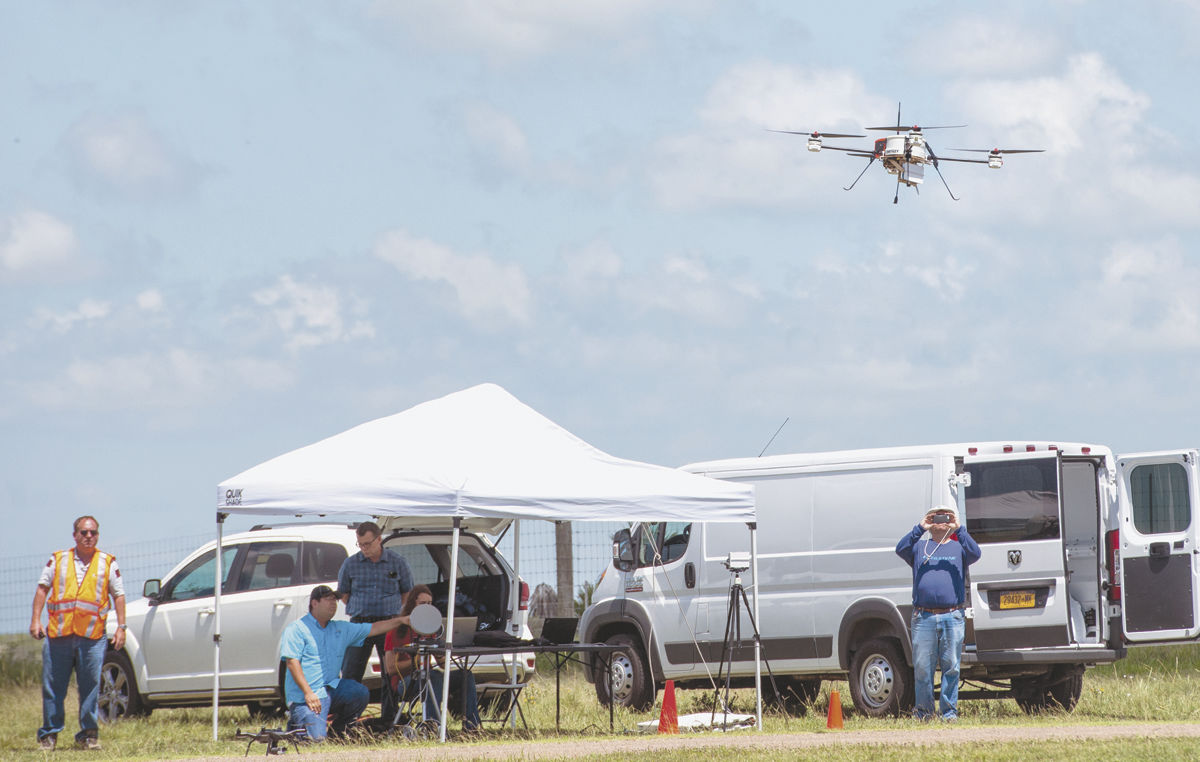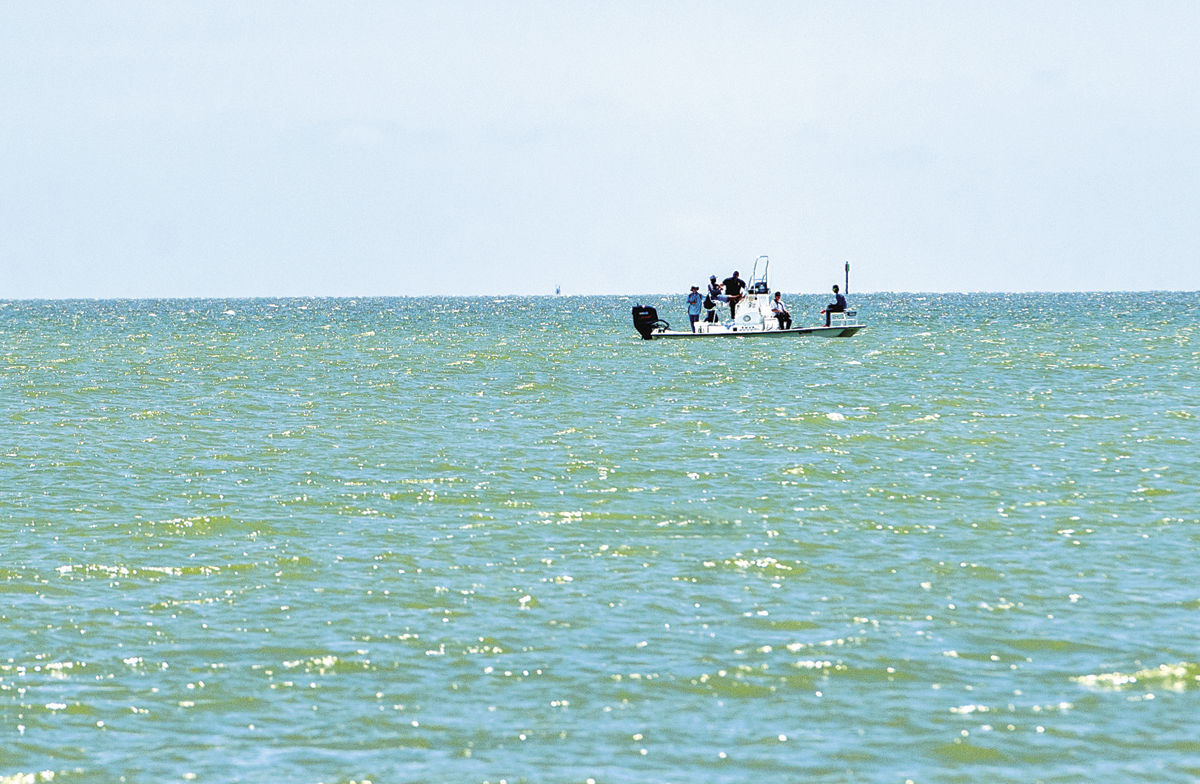PORT MANSFIELD — From 400 feet in the sky, drones searched the Laguna Madre for approaching aircraft.
The mission — to test airborne radar.
Yesterday, Texas A&M University-Corpus Christi launched three drones from Charles R. Johnson Airport as part of one of the largest tests of NASA’s unmanned traffic management research project.
“This is a completely new capacity we never had before,” Melanie Neely Willis, Lone Star Unmanned Aircraft Systems Center’s assistant director, said about the new airborne radar technology.
Across the country, the program is launching drones from six Federal Aviation Administration unmanned aircraft system test sites.
Today, the university’s Lone Star Unmanned Aircraft System was expected to launch three drones. Those are closed to the public.
Over the Laguna Madre, project scientists yesterday used drones to monitor the skies in search of any approaching aircraft.
NASA is counting on such projects to make airspace safer for aircrafts.
Drones relayed part of their data to NASA, Neely Willis said.
“One drone carrying this airborne radar is able to detect another drone in the same airspace,” she said.
As part of a simulated search for victims at sea, drones also relayed video of a “capsized boat” to the Port Mansfield Police Department.
Since October 2014, Port Mansfield has become the top launch site for the university’s Lone Star Unmanned Aircraft Systems Center, a landmark program that is one of six in the United States.
In December 2013, the FFA picked Texas as one of six states to launch drone test flights after university researchers spearheaded a statewide proposal that led to the selection.
Port Mansfield’s sparsely populated location near the Gulf of Mexico has made it the Texas program’s busiest launch site.
The Lone Star program’s job is to help pave the way for safe UAV operation in national airspace.
Once airspace opens to unmanned aircraft, studies project the developing industry would generate a statewide economic boon of about $6.5 billion, creating 8,256 jobs from 2015 to 2025, officials said.
The Lone Star program has built up a backlog of private companies interested in participating in drone flights to test technology.
Representatives with AirRobot US, a drone manufacturer, attended yesterday’s launches.
The program has led BNSF Railway, a major transportation company, to open offices at the airport here.
* Texas’ unmanned
aircraft industry projected
to generate $6.5 billion
* Expected to create 8,256 jobs from 2015 to 2025.
* Texas A&M University –
Corpus Christi
* Lone Star Unmanned
Aircraft System
Mission: To test new
airborne radar technology







